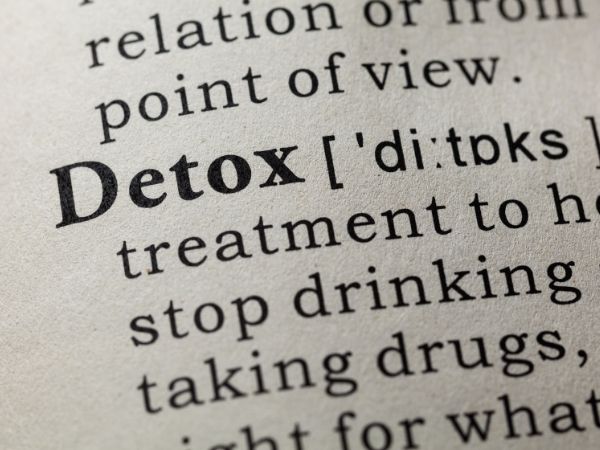Opiates are narcotics derived from the opium poppy plant. Common opiates include opium, morphine, and codeine. They are highly addictive substances, and currently, there is an opiate epidemic happening in America.
Recent research found more than 10 million people are misusing prescription pain killers, 1.6 million have an opioid use disorder, and 70,630 died from a drug overdose in the year before the survey.
Whether you have been prescribed opiates or use them illicitly, you can quickly develop an opiate use disorder (OUD). Within a week of using or misusing opiates, tolerance to the drug increases. This means you need more of the drug to feel the same effects as when you first used it.
For example, if someone is prescribed opiates and instructed to take one pill every four to six hours, they likely noticed that after a week of following instructions, the effects of the opiates diminished. More of the drug is needed, so they start taking one pill every two hours or two tablets every four hours. Some might find that crushing, snorting, or liquifying it and injecting the drug gives them the high they seek. Eventually, the body becomes dependent on opiates to function, and if they try to quit using, severe withdrawal effects can occur. While opiate withdrawal symptoms are not associated with death, they can make you feel like you are dying. This is why many continue to use it.
Opiate Detox Timeline
Entering an opiate detox treatment program is the best way to make it through withdrawal, giving you a great start to a sober life. You may be wondering how long it takes to detox from opiates. While this can vary for each person, there is a typical timeline of what you can expect.
Stage 1 of Opiate Detox
Within six to 12 hours of the last dose of short-acting opiates and 30 hours of the last dose of long-acting opiates, withdrawal symptoms can appear. Symptoms can range from mild to severe, depending on factors like the type of opiate, how long you have used opiates, method of use, amount of use, weight, metabolism, and more.

Common symptoms in stage one include the following:
— Anxiety
— Muscle aches and pains
— Stomach spasms
— Restless legs
— Eyes tearing
— Excessive sweating
— Insomnia
— Frequent yawning
Intense cravings during stage one can make it feel impossible to focus on anything other than opiates. They tend to worsen in stage two.
Stage 2 of Opiate Detox
About 72 hours after taking a last dose of opiates, withdrawal symptoms can feel overwhelming and include:
— Abdominal cramping
— Diarrhea
— Dilated pupils
— Nausea and vomiting
— Rapid heart rate
— Higher blood pressure
Urges to relapse take over your thoughts, preventing you from concentrating or staying focused on anything else. If you can get through stage two, you are through the roughest patch. That doesn’t mean withdrawal symptoms end, however.
Stage 3 of Opiate Detox
One week after the last dose of opiates is consumed, your physical symptoms of withdrawal will ease. While you will still experience symptoms like tiredness, sweating, body aches, and pains, anxiety, depression, irritability, and nausea, the intensity will be less.
As the physical symptoms of opiate detox subside, the emotional symptoms seem to be sticking around and lead well into the next stage.
Stage 4 of Opiate Detox
Two weeks after the last opiate use, it is common to experience emotional highs and lows. Anxiety, depression, mood swings, irritability, restlessness, and sleep disturbances may continue for weeks or months. In addition, cravings for opiates can continue for many months to over a year. The intensity of the cravings and withdrawal symptoms will continue to lessen with each day you remain sober.

Making it through the stages of opiate detox is difficult without treatment. With treatment, however, you can not only make it through detox, but you can continue in treatment programs that can help you avoid a relapse on opiates.
Treatment for Opiate Detox
Reports suggest that only one in four people with an opiate use disorder seek treatment. You can be that one in four. You can be the one that gets treatment and never uses opiates again.
The day you enter a treatment facility for opiate use disorder, you can begin receiving medical care that includes medicines to minimize cravings and ease physical discomfort.
Medicines commonly used to treat opiate misuse include buprenorphine, methadone, and clonidine. Methadone is a synthetic opioid that, when administered under a doctor’s care, helps eliminate withdrawal symptoms. Doctors will taper your methadone doses over time, and eventually, you can discontinue anti-withdrawal medications. Buprenorphine is also a synthetic opioid, but it only allows a portion of the effects to be felt. It has a ceiling that prevents abuse of the drug. Clonidine is often used to help ease anxiety, as well as many other withdrawal symptoms.
Because all of these medications have a potential for abuse, they are only given under medical supervision. Medication-assisted treatment is typically combined with behavioral counseling for optimal results. If you don’t change how you think and behave regarding opiates, you are more likely to relapse.
Behavioral Counseling
Behavioral counseling is provided during opiate detox treatment by a licensed mental health and substance abuse professional. Therapeutic activities, like the following, are utilized.
— Cognitive-behavioral therapy
— Contingency-management therapy
— Dialectical-behavioral therapy
— Motivational-enhancement therapy
— Family therapy
— Co-occurring disorders therapy

You can also work on mental health issues as they are often reasons for self-medicating with opiates or a result of opiate use. You may even need medication to assist with mental health disorders like depression and anxiety, both beneficial to the opiate detox timeline.
Importance of Detox and Rehab Programs
If you detox from opiates but don’t continue in long-term rehab programs, your chances of relapsing increase. Think of rehab as a place where you can acquire shields that protect you from relapse. Each skill you learn in rehab is a shield. The more safeguards you can put between you and opiates, the more protection you have from a potential relapse.
The “shields” you gain in detox and residential programs help you fight opiate relapse with:
— Early recovery skills
— Relapse prevention skills
— Relationship building skills
— Self-care skills
— Conflict resolutions skills
— Communication skills
Relapsing after detox is dangerous and is the reason for many overdose deaths. We can help you avoid relapse and start living the healthy life you deserve.

Call us today to learn more about our medication-assisted detox treatments and continued aftercare. Together, we can create the right treatment plan to help you succeed. And you can experience this in a beautiful, peaceful setting in Arizona.
CAVE CREEK
(623) 323-1970
29858 N. Tatum Blvd.
Cave Creek, AZ 85331
CHANDLER
(480) 680-0606
3033 South Arizona Avenue
Chandler, Arizona 85248
TUCSON
(520) 436-7860
5151 East Pima Road
Tucson, Arizona 85712
SCOTTSDALE
(623) 323-7986
8171 E Indian Bend Rd
Scottsdale, AZ 85250





